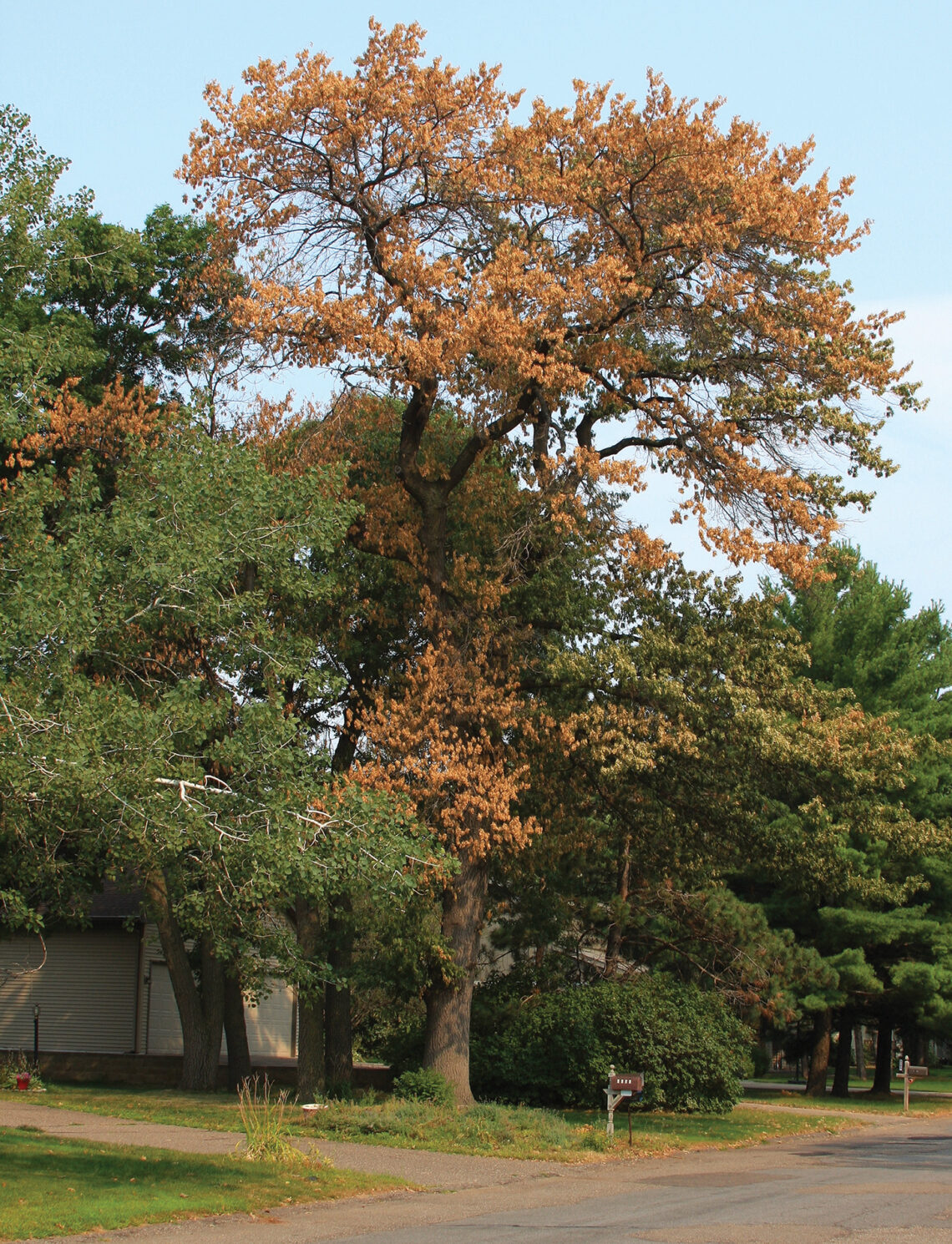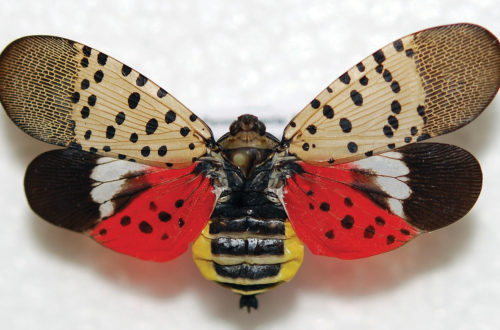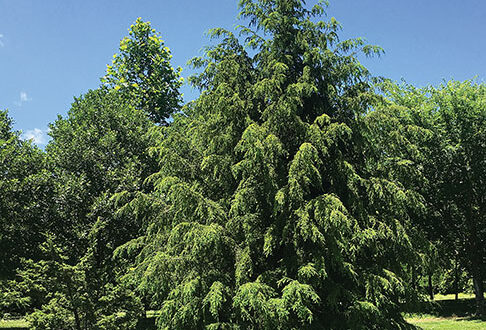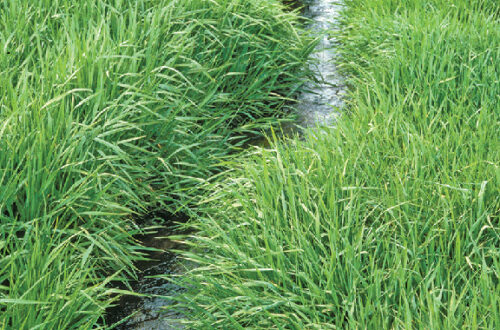Oak wilt was spotted nearby in Brooklyn and Long Island in 2016. It’s a serious vascular disease caused by a fungus (Bretziella fagacearum) that threatens oaks. The fungus penetrates the xylem and restricts the flow of water and nutrients up toward to leaves.
It was first described in Wisconsin in 1944. Two other vascular diseases you’ve probably heard of are Chestnut Blight and Dutch Elm Disease. Bad company.
Oak wilt can be spread by insects and root-to-root contact with other oak trees. The human movement of firewood is another important vector.
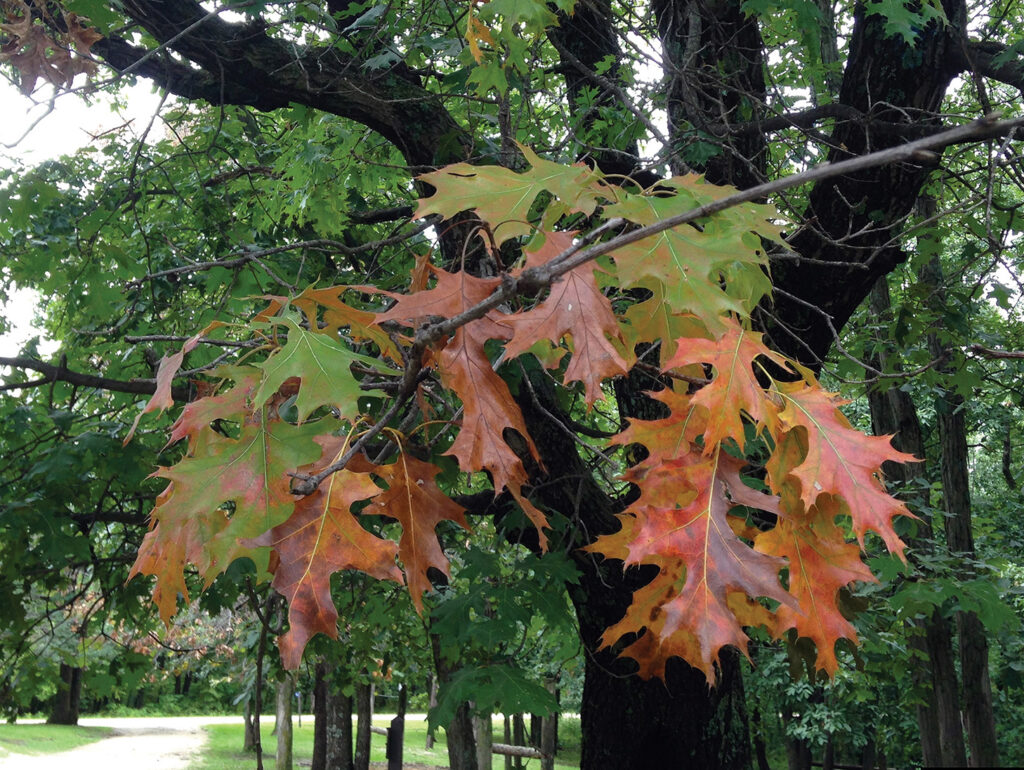
Oak wilt sign on northern red oak (Quercus rubra).
The symptoms include leaf discoloration, leaf wilt, defoliation and death of the tree, which can occur in just one season for some oaks.
The symptoms begin at the top of the tree and move inward and downward. The leaves turn yellow, beginning at the tip and margins. Sensitive trees will drop their leaves in the middle of the summer and exhibit crown dieback.
All oaks (Quercus spp) appear to be susceptible to the disease. According to the Connecticut Agricultural Experiment Station (CAES), the red oak group is the most susceptible … red oak (Quercus rubra), black oak (Quercus velutina) and pin oak (Quercus palustris). White oak (Quercus alba) and bur oak (Quercus macrocarpa) are somewhat resistant.
Some varieties of apple may also be susceptible.
Much of the following information was gleaned from CAES fact sheets.
Signs & Symptoms
• Leaves turn dull green, brown or yellow
• Leaf discoloration moves from the edges inward and begins in early summer
• Wilting and bronzing of the foliage starts at the top of the tree
• Premature leaf drop can include green leaves
• White, grey or black fungal mats just under the bark on the trunk and larger branches. The mats have a fruity smell and attract sap beetles.
• Vertical cracks in the trunk and large branches. The fungal spore mats (or pressure pads) exert outward pressure on the bark.
• Brown streaks in sapwood
• Positive identification requires laboratory testing
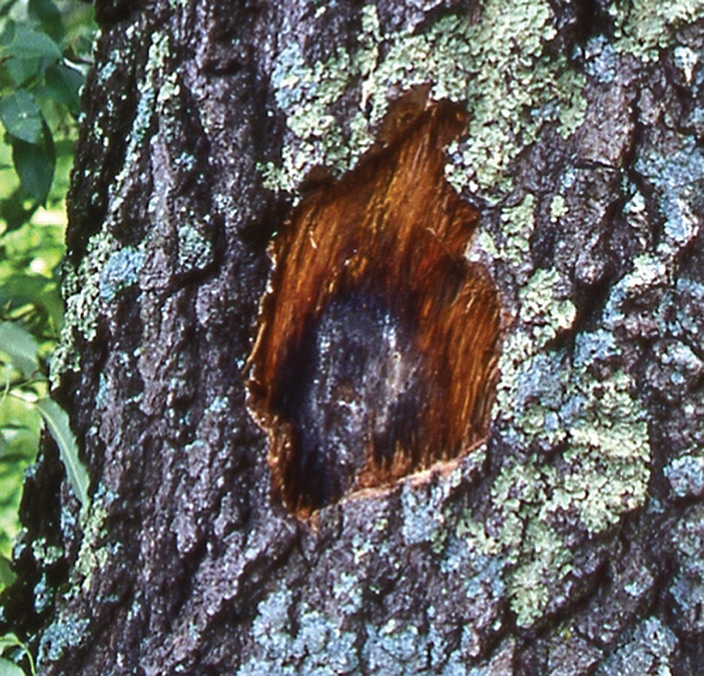
Spore mat and pressure pad under the bark of a tree killed by oak wilt.
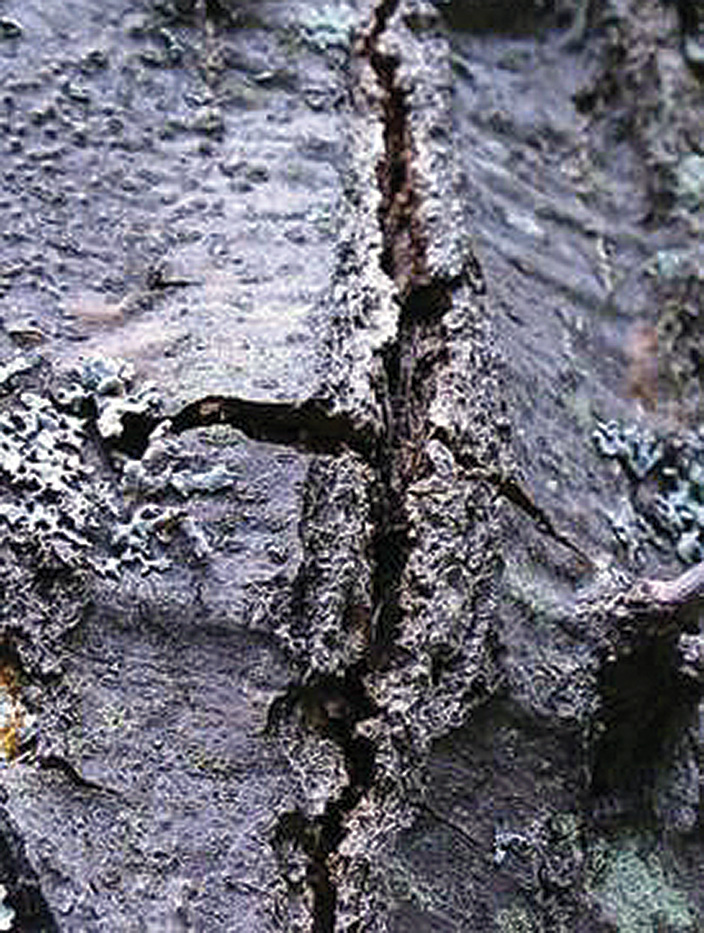
Vertical cracks in bark caused by pressure pads.
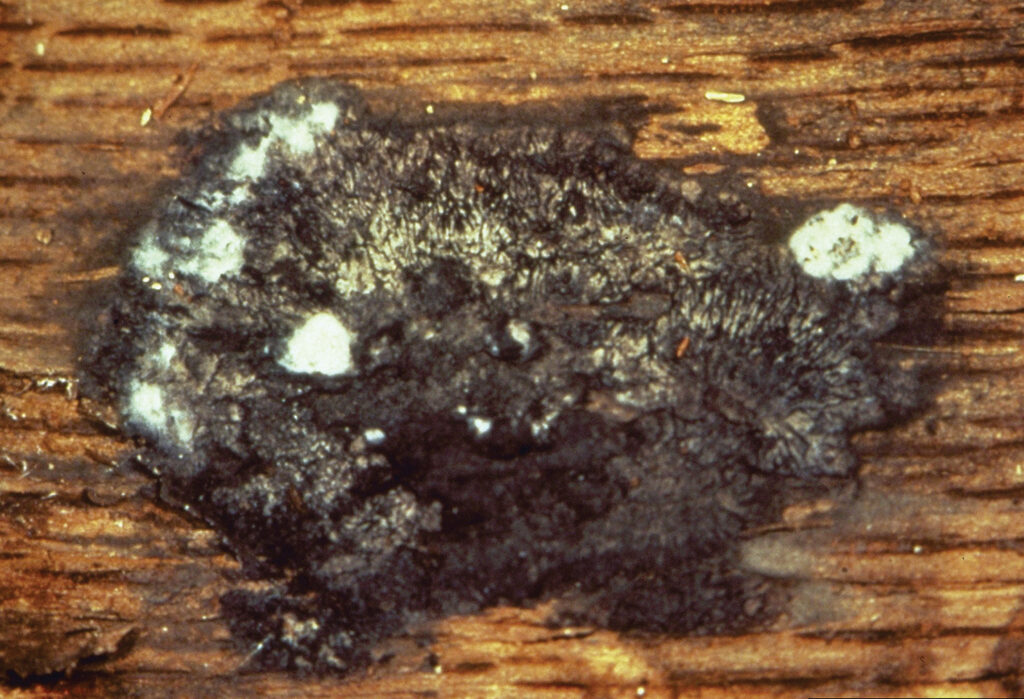
Close-up view of fungal mat on peeled stem.

Mild symptoms (brown streaks in sapwood) when bark is removed.
How Does It Spread?
• Root-to-root contact (grafting) with infected trees
• Sap beetles can carry fungal spores with them as they move from tree to tree
• Movement of wood products by humans, particularly those with bark
Prevention
• Don’t move firewood. Covering firewood with clear plastic (and burying the edges) can solarize a wood pile and eradicate pathogens.)
• Don’t prune oaks from April to July. If a tree is wounded, apply a thin layer of wound paint or shellac immediately.
• If a tree is infected it should be removed immediately. Stumps should be pulled. You can’t eradicate the disease
• Sever the root connections between diseased and healthy trees by trenching.
• Plant a diversity of trees.
• Inject valued oaks with propiconazole (a fungicide). Consult a trained and licensed arborist.
• Sterilize/sanitize all pruning equipment when moving between trees.
For more information consult CAES fact sheets at https://bit.ly/3xfEIaY and https://bit.ly/3TyLyzX
– Compiled by Will Rowlands
REPORTING
If you see signs and symptoms of oak wilt, report the sightings to:
Dr. Robert Marra
Dept. of Plant Pathology & Ecology
CT Agricultural Experiment Station
New Haven, Conn
Robert.Marra@ct.gov
(203) 974-8508
